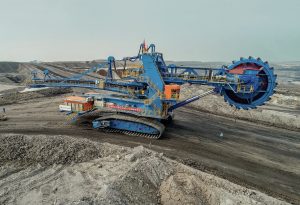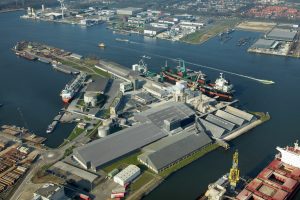
Africa’s fertilizer renaissance
New ammonia and urea plants in Nigeria and Ethiopia are part of a wave of new capacity in Sub-Saharan Africa, and may help pull up regional demand from its current low base level.

New ammonia and urea plants in Nigeria and Ethiopia are part of a wave of new capacity in Sub-Saharan Africa, and may help pull up regional demand from its current low base level.

At the Nitrogen+Syngas Conference 2020, held in The Hague, Netherlands, Haldor Topsoe launched its new TITAN ™ series of steam reforming catalysts. The company says that the new series, which consists of the RC-67 TITAN and RK-500 TITAN catalysts, offers improved performance and longer catalyst lifetime thanks to the hibonite-rich composition. The addition of titanium promoters adds exceptional mechanical strength while a seven-hole cylindrical shape yields both a very low pressure drop and a high surface area. Pressure drop build-ups in syngas plants can cause unscheduled downtime and cost millions of dollars, while thermal instability during operation can lead to operational risk and reduce plant lifetime. Topsoe says that the catalysts can mitigate these risks, ensuring lower operating costs, increased profit margins, and reduced energy usage.

Schoeller-Bleckmann Nitec (SBN), an experienced manufacturer of high pressure equipment for ammonia and urea plants for many years, also helps customers when things go wrong. SBN has come to the aid of operators on numerous occasions, helping them return their plant to operation as soon as possible when a problem occurs. R. Bunzl discusses SBN’s approach to finding solutions to a number of exceptional problems in urea equipment.

We look at state-of-the-art technology used in phosphate and potash mining, including equipment and systems for excavation, tailings thickening, transport, tunnelling and processing.

With more than 15 million hectares of land watered by drip irrigation globally, the technology’s agricultural potential remains enormous. Fertigation – the ability to manage and regulate both water and plant nutrients – is a key advantage helping drive worldwide growth.
The Ma’aden Wa’ad Al Shamal Phosphate Company (MWSPC) has signed a service agreement for a period of three years with DuPont Clean Technologies for its sulphuric acid plant at Sirhan. The service programme will include activity testing of catalyst samples, evaluation of catalyst performance, plant optimisation, troubleshooting and management of catalyst replacement. DuPont says that it will also track plant performance and assess its overall health using pre-agreed metrics and its proprietary PeGASyS™ gas chromatography system, which can be used to detect possible leaks in gas-gas heat exchangers, identify SO2 gas bypassing and measure overall plant conversion in order to optimise plant operation, reduce SO 2 emissions, increase production and improve converter performance.

Maire Tecnimont and its urea licensing subsidiary Stamicarbon celebrated the 10th anniversary of Tecnimont’s purchase of Stamicarbon from DSM at Limbricht Castle in the Netherlands. The event, attended by Stamicarbon employees and the management of both companies, was an opportunity for the companies to reflect on the past ten years, as well as future developments and opportunities. From Maire Tecnimont’s point of view, it has enabled them to become a leading technology provider for urea production, and strengthened the group’s identity as a major technology licensor and EPC contractor for fertilizer plants. Stamicarbon was able to broaden its value proposition thanks to effective synergies with the group’s sister companies, while leveraging Maire Tecnimont’s network to expand its international footprint.

Leading EU phosphate and NPK fertilizer producers are profiled, including EuroChem, Fertiberia, Grupa Azoty, ICL, Prayon and Yara.

Sirius Minerals is in talks with Anglo American about a £386 million cash offer for its UK-based polyhalite mine project.

Andy Hemphill , senior editor for potash at ICIS Fertilizers, takes a deep dive into the potash market. Potash producers are praying that tight capacity control and resurgent demand will curb the current bearish price trend.